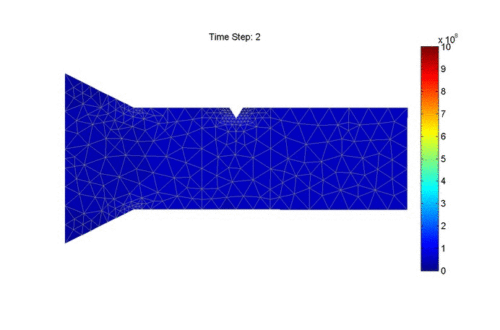Fatigue In general, boundary condition loads are at a level that do not cause any damage when applied once, but when repeatedly applied, damage occurs in the form of cracks or fractures. In other words, fatigue is the changes that occur in the internal structure of the material under variable stresses. Life: It is the number of cycles that the machine element can resist until it breaks. Fatigue damage; Breaking a material under variable dynamic loads after a certain period of time is called fatigue damage. Except in special cases, the stress level, which causes fatigue mostly, is less than the yield strength of the material. Material behavior under variable loads was first performed by Wöhler in 1866. S-N (Stress/Number of Cycles) method is most commonly used in the calculation of fatigue analysis. The higher the stress on the machine element, the life of the structure reduces in reverse relation according to stress level. Fatigue curve; For a constant mean stress value, it is occured by loading the sample at different stress width until it breaks off and by obtaining a series of stress-life values. Properties of fatigue curve It consists by two parts and the strength value of the oblique descending part is called time resistance. The values on the horizontal part of the curve are called continuous strength limits. Factors affecting fatigue Effect of section: Fatigue strength of rectangular sections is lower compared to circular sections. Effect of impact:If the machine element is operated under impact loads, the stress amplitude increases. Therefore, fatigue life changes. Effect of temperature: Fatigue life is changed as the temperature decreases. Effect of corrosive: Corrosion start zones are reflected as fatigue fracture start zones. Fatigue life calculation methods S-N (Stress-Life): It ossociates general cross-section or local elastic stress value with total life. ε-N (Strain-Life): It ossociates local strain vaue with crack onset LEFM (Crack-Growth): It associates the progression of the crack with the stress intensity.
